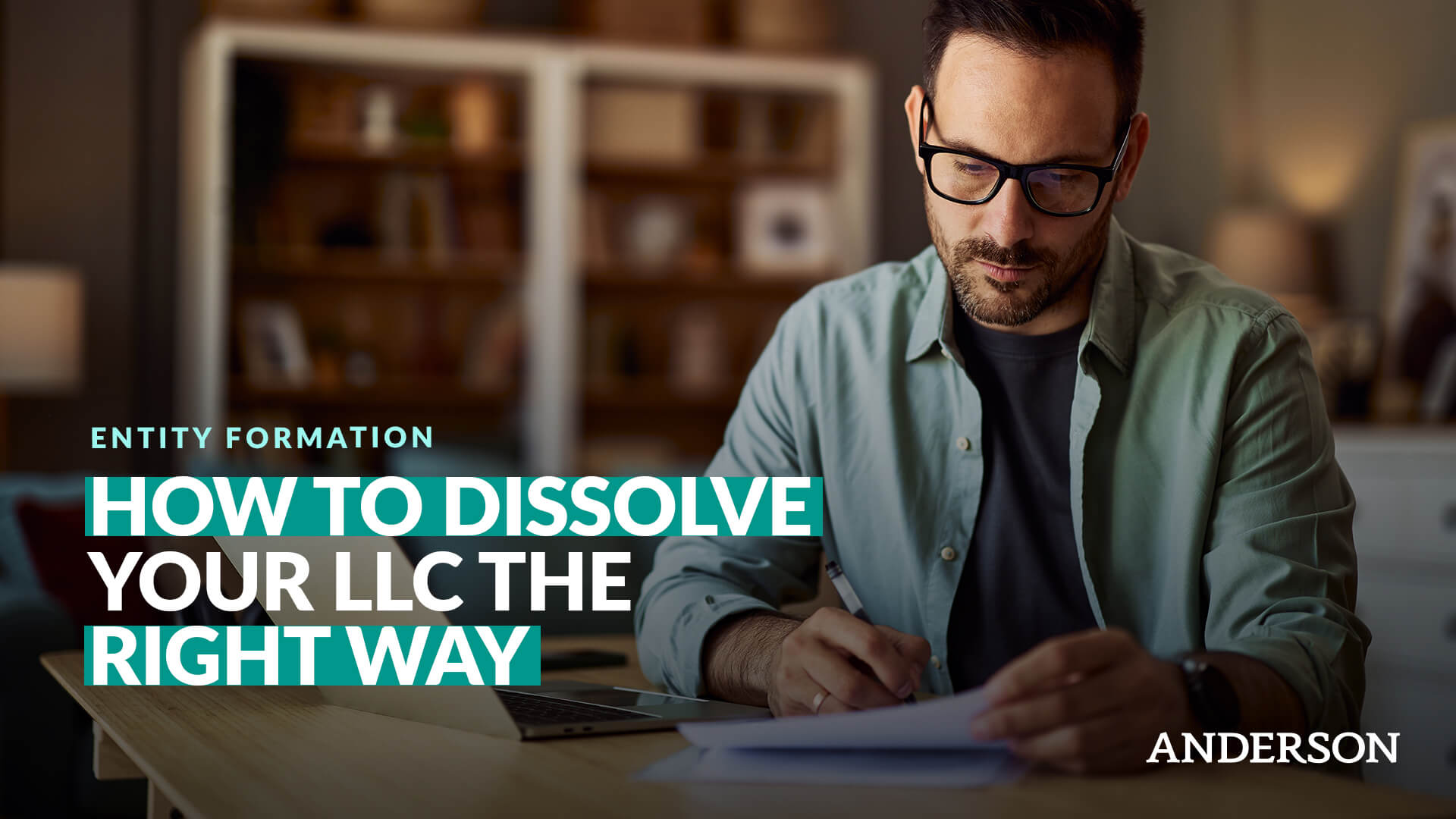
Why Is It Important to Dissolve Your LLC Properly?
Most investors believe that closing an LLC is as simple as ignoring their business until the Secretary of State automatically dissolves it. However, failing to follow the proper dissolution steps can result in your LLC remaining legally active, which may expose you to personal liability in future lawsuits.
Let’s say you used your LLC to flip a property, sold it, and then stopped using the company. You assume the Secretary of State will dissolve the LLC after a period of inactivity. Sounds easy, right? Not quite.
If someone sues years later over that property—alleging you failed to disclose a defect, for example—a court could determine that your LLC still exists because you never formally dissolved it. In that case, your personal assets may be at risk. For more examples, watch my video about dissolving your LLC here.
That’s why I always tell my clients: Don’t abandon your LLC—close it correctly. If you don’t, you could lose the very protection you created it for.
What Happens If You Don’t File for Dissolution?
When the state dissolves an LLC for nonpayment or inactivity, it is referred to as administrative dissolution. But that doesn’t necessarily mean the entity is dead.
If the members never formally voted for voluntary dissolution in the operating agreement, the state may still treat your LLC as active for liability purposes. In a lawsuit, a plaintiff might argue you still intended to keep the company active—and that’s enough for a judge to let them come after you personally.
That’s why formal intent matters. Proper LLC dissolution not only terminates your business legally, it also creates documentation proving that you acted in good faith and decided to close your company and settle all debts.
Request a free consultation with an Anderson Advisor
At Anderson Business Advisors, we’ve helped thousands of real estate investors avoid costly mistakes and navigate the complexities of asset protection, estate planning, and tax planning. In a free 45-minute consultation, our experts will provide personalized guidance to help you protect your assets, minimize risks, and maximize your financial benefits. ($750 Value)
What Are the Steps of the Dissolution Process?
State requirements vary slightly, but the basic framework is the same. Let’s walk through the four key steps to officially close an LLC the right way.
Step 1: Review Your Operating Agreement & Adopt a Dissolution Resolution
Before you touch any state forms, read your operating agreement. This is where you’ll find the exact procedure to dissolve your business.
Most operating agreements require:
- A formal meeting of members (and managers, if applicable)
- A recorded resolution approving dissolution
- Meeting notes or written consent filed in the company records
This resolution serves as legal proof that all business owners have agreed to end the LLC. Skip this step, and you could lose the liability shield that protects your personal assets.
Think of it as closing the door with a lock instead of leaving it ajar. Without that documentation, someone could argue your LLC or Corporation still exists—and pull you back into the line of fire.
Step 2: File Articles of Dissolution With the Secretary of State
Once you’ve adopted your resolution, it’s time to make it official. You’ll need to file Articles of Dissolution (sometimes called a Certificate of Dissolution) with your Secretary of State.
This filing tells the state that your LLC is formally ending operations. Depending on your state, filing requirements might also ask for:
- The LLC’s legal name
- The dissolution date
- A statement confirming member approval
- Payment of any final fees or annual reports
Remember, filing Articles of Dissolution is not the first step—it’s the second. The operating agreement must come first. Otherwise, a court may reject your paperwork if someone challenges your LLC’s validity.
Step 3: Close Bank Accounts, Settle Debts, & Distribute Remaining Assets
Before you file with the state—or immediately after—you’ll need to close your business bank accounts and settle any remaining financial obligations.
Check for any outstanding debts, such as bills, sales tax, loans, or contracts, and ensure you notify creditors in writing before finalizing distributions. This gives creditors time to submit and resolve their claims properly.
Follow these steps carefully:
- Withdraw all remaining funds and close the LLC’s bank account.
- Check for any outstanding debts, loans, or contracts.
- Pass a member resolution confirming that all known debts have been paid.
- Distribute the remaining funds or assets to members in proportion to their ownership percentage.
Be cautious when transferring money. If another entity owns your LLC, direct the funds to that entity instead of to yourself personally. Always distribute according to the member list in your operating agreement.
This step is essential because if you dissolve an LLC with unpaid debts or mishandle asset distribution, creditors can still come after you later—and potentially pierce the corporate veil.
Step 4: File Your Final Tax Return & Cancel Your EIN
Finally, you’ll need to close things out with the IRS. If the IRS taxes your LLC as a partnership, S-Corporation, or C-Corporation, you must file a final tax return.
If the IRS classifies your LLC as a disregarded entity (a single-member LLC taxed on your personal return), notify the agency that you have closed the entity and cancel its Employer Identification Number (EIN).
This ensures that your LLC is no longer responsible for tax filings or liabilities. It also prevents confusion or future correspondence from the IRS tied to an inactive business.
What Does “Articles of Dissolution” Mean?
“Articles of Dissolution” is the official legal document that notifies your state you’re closing your LLC. Filing this tells the Secretary of State your business is no longer active and ends your obligations to file annual reports or pay state fees.
Think of it as the LLC’s death certificate. Without it, the state and the public record still treat your company as alive—and that can open you up to future legal trouble.
Is Dissolving an LLC Hard?
Not if you follow the right process. The real challenge isn’t the paperwork—it’s knowing what to do before and after filing your Articles of Dissolution.
With this checklist, dissolving your LLC is simple—and it shields you from years of potential liability:
Follow your operating agreement.
Document your intent to dissolve.
Close accounts and pay debts.
File the proper forms in accordance with state law and the IRS.
What Should You Do Next?
If you’re ready to close your LLC and want to ensure proper dissolution without risking future creditor claims or tax issues, get expert help before taking the next step. Our experienced attorneys will guide you through every stage of the dissolution process—from filing Articles of Dissolution to resolving debts and maintaining your asset protection strategy. Schedule your free 45-minute Strategy Session today to receive personalized guidance on how to properly dissolve your LLC, handle creditor claims, or restructure for future investments. We’ll ensure your entity is closed correctly and your assets stay protected long after your business ends.














